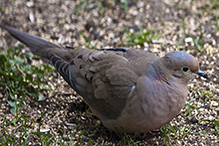Mourning Dove
(Zenaida macroura)
Conservation • Description • Habitat • Ecology • Distribution • Taxonomy
|
|
||||||||||||||
Description |
Mourning Dove is a medium sized, 9″ to 13″ long, slender bird with a wingspan of 15″ to 18″. It weighs 3 to 6 ounces. The adult male head, neck, breast, and belly are mostly light brown. The top of the head and nape of the neck are bluish gray. The face, throat, and breast have a pinkish tint. The neck feathers have a pink iridescence. The back and upper wings are grayish brown. The rump is not white. The wings have large black spots. The tail is dark brown or gray, long, and tapered, the inner feathers longer than the outer ones. The 3 outermost tail feathers have white tips bordered by black. The head is small and rounded. There is a small black spot just below and a little behind the eye. The eyes are dark and are surrounded by blue skin. The beak is short, thin, and dark. The legs are short and reddish. The feet are reddish with 3 toes forward and one toe back. The female is similar to the male but less colorful. The top of the head and nape of the neck are olive gray. The face and throat are olive brown. The breast is tan. The neck feathers have an olive green, sometimes with pink, iridescence. The 1 or 2 outermost tail feathers have white tips bordered by black. On taking flight the wings produce a light, airy whistle and clap at the top and bottom of the stroke. |
Size |
9″ to 13″in length 18″ wingspan |
Voice |
|
|
Similar Species |
Rock pigeon (Columba livia) is a somewhat larger, much chunkier bird, 11″ to 14″ long, 9.3 to 13.4 ounces, with a wingspan of 20″ to 26″. The wings are broader. The tail is square with no white markings. The rump is white. |
Habitat |
Open and semi-open areas; prairie, lightly wooded areas, agricultural and suburban areas. |
Ecology |
Migration |
Early March to late November |
Nesting |
|
Food |
Seeds |
Distribution |
Occurrence |
Abundant migrant and breeder |
Maps |
The Minnesota Ornithologists’ Union All Seasons Species Occurrence Map |
Taxonomy |
|
Class |
Aves (birds) |
Order |
Columbiformes (pigeons and doves) |
Family |
Columbidae (pigeons and doves) |
Subfamily |
Columbinae |
Genus |
Zenaida (zenaida doves) |
The current subdivision by many of the family Columbidae into five subfamilies has been shown by DNA analysis to be incorrect. For this reason, most sources do not include the subfamily when listing the taxonomic tree for doves. |
|
Subordinate Taxa |
|
Caribbean Mourning Dove (Zenaida macroura macroura) Eastern Mourning Dove (Zenaida macroura carolinensis) Mourning Dove (Zenaida macroura clarionensis) Mourning Dove (Zenaida macroura turturilla) Western Mourning Dove (Zenaida macroura marginella) |
|
Synonyms |
|
Columba macroura |
|
Visitor Photos |
||
Share your photo of this bird. |
||
This button not working for you? |
||
Gregory Gilman |
 |
The "Mourning" Dove |
Ramona Abrego |
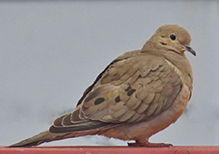 |
Joan Rock |
||
| Several pictures from the yard. |
|
|
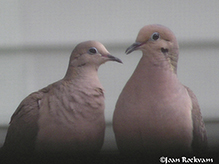 |
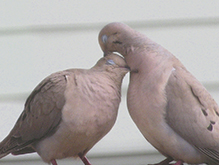 |
|
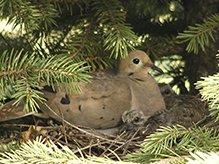 |
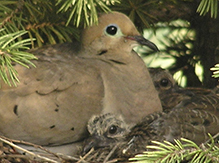 |
|
Tom Baker |
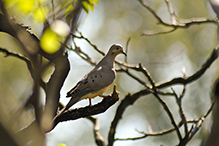 |
MinnesotaSeasons.com Photos |
||
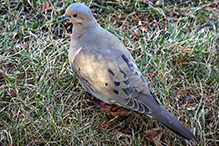 |
||
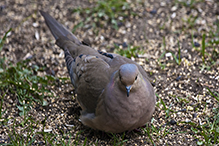 |
|
|

Slideshows |
Mourning Dove |
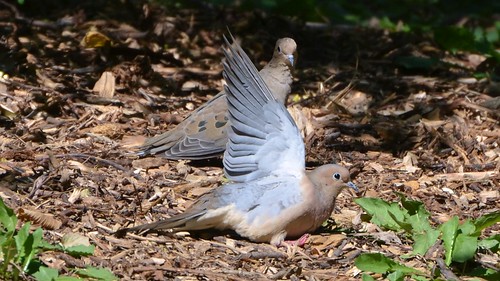
|
Mourning Dove |
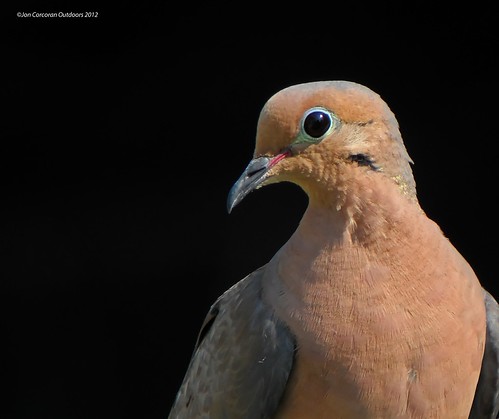
|
Doves |
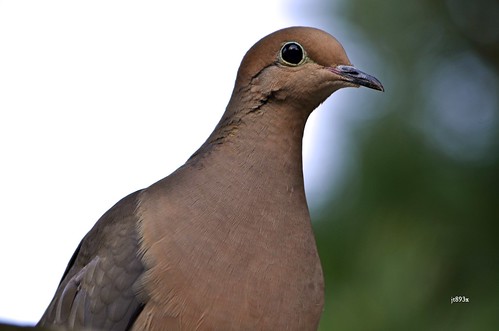
|
Mourning Doves |

|

Visitor Videos |
||
Share your video of this bird. |
||
This button not working for you? |
||
|
Other Videos |
||
Mourning Dove (Zenaida macroura) - Silent |
About
Published on Jan 28, 2014 From My Word with Douglas E. Welch (http://welchwrite.com/blog) Shot January 23, 2014 in San Fernando Valley, Van Nuys, Los Angeles, California. More info on Mourning Dove (Zenaida macroura): For more wildlife videos, visit this YouTube Playlist: |
Mourning Dove (Columbidae: Zenaida macroura) Singing Male |
About
Uploaded on Jun 24, 2009 Photographed near Kellys Slough NWR, North Dakota (24 June 2009). |
Mourning Dove (Columbidae: Zenaida macroura) Nest with Eggs |
About
Uploaded on May 15, 2010 Photographed near Fisher, Minnesota (15 May 2010). |
Mourning Doves - In Love? |
About
Uploaded on Apr 25, 2010 I looked out my window and saw these two Mourning Doves having a good time together. I watched them for a few minutes and would have to say that they were either just cleaning one another or courting one another from the things I saw them doing to eachother. For me it is hard to tell a male from a female Mourning Dove so if any of you know if these are a male and female let me know.. I thought it was a beautiful sight to see them so calm together like this. I only wish I had started filming them a little earlier.. The Mourning Dove (Zenaida macroura) is a member of the dove family (Columbidae). The bird is also called the Western Turtle Dove or the American Mourning Dove or Rain Dove, and formerly was known as the Carolina Pigeon or Carolina Turtledove. It is one of the most abundant and widespread of all North American birds. It is also the leading gamebird, with up to 70 million birds shot annually in the U.S., both for sport and for meat. Its ability to sustain such pressure stems from its prolific Breeding: in warm areas, one pair may raise up to six broods a year. Its plaintive woo-oo-oo-oo call gives the bird its name. The wings can make an unusual whistling sound upon take-off and landing, and the bird is a strong flier, capable of speeds up to 88 km/h (55 mph). Mourning Doves are light grey and brown and generally muted in color. Males and females are similar in appearance. The species is generally monogamous, with two squabs (young) per brood. Both parents incubate and care for the young. Mourning Doves eat almost exclusively seeds, but the young are fed crop milk by their parents. More on Morning Doves: Background music downloaded at Freesound.org and user UncleSigmund |
birds usa... mourning dove |
About
Published on Dec 30, 2012 Zenaida macroura with nesting material... Romans acres, Peru, Indiana, USA 25-07-2012 |

Visitor Sightings |
||
Report a sighting of this bird. |
||
This button not working for you? |
||
Gregory Gilman |
Location: NW Rochester The "Mourning" Dove |
 |
| Ramona Abrego | Location: Washington County |
| Tom Baker 8/9/2012 |
Location: Edenbrook Conservation Area |
| Joan Rock 7/15/2005 |
Location: Redwood County Several pictures from the yard. |
| Joan Rock 6/25/2005 |
Location: Redwood County Several pictures from the yard. |
MinnesotaSeasons.com Sightings |
||

|
Created: Last Updated: © MinnesotaSeasons.com. All rights reserved. |
